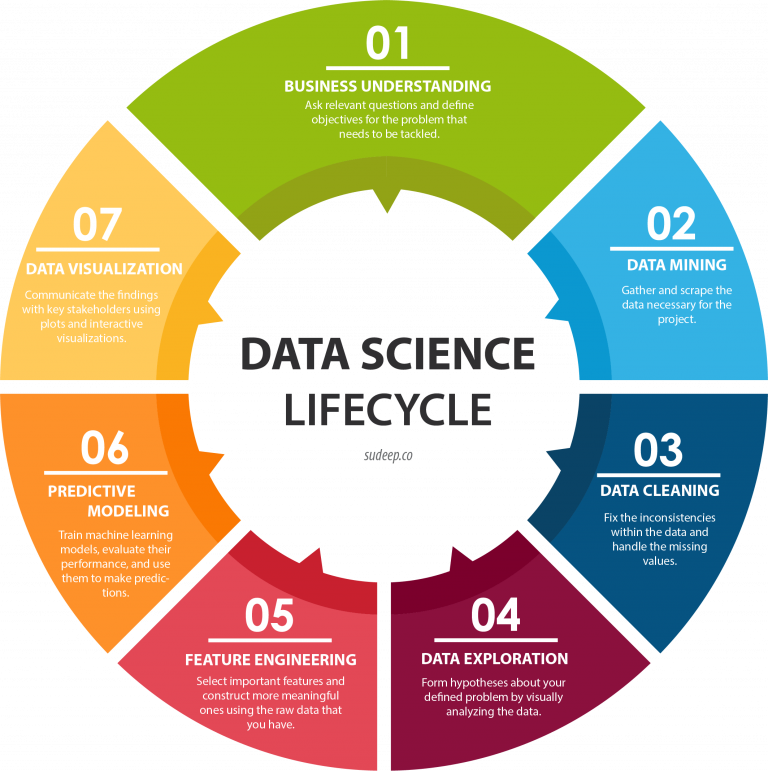Analyzing the massive amount of data available today seems like an obvious step for any business. Who wouldn’t want precise insights to make more informed decisions and find new opportunities for growth? Incredibly enough, a lot of people.
A recent Deloitte survey says that a staggering 67% of executives aren’t comfortable accessing or using data from their companies’ tools and resources. So, they basically prefer to stick to their old routines rather than having to learn how to use data analytics. The worst part is that they often shield themselves in all kinds of excuses. The most widely used: data analytics doesn’t have enough Return over Investment (ROI).
There’s enough evidence out there for anyone to know that that isn’t true. If you use data analytics properly, your ROI can skyrocket. Of course, you have to actually learn how to do it to get there but it isn’t as hard as you may think. Here are 4 ways in which you can leverage data analytics and improve your ROI.
But first – the importance of data culture
Before getting to the tips, it’s important to underline how crucial a data-driven culture actually is for analytics to have a chance at success. If you can’t convince the C-level execs of the value hidden in data, then all of this will be impossible. That’s why you need to foster a data culture in your company.
When you do so, your teams will turn to data to create more accurate strategies, adjust objectives, and identify key business patterns and opportunities. If you fail to do so, your people will keep doing things in the same old fashioned way and soon your company will start lagging behind your competition.
How to create a data-driven company is a challenging task that goes beyond this article, but it’s enough for you to know that you have to evangelize your teams. Show them how data analytics can positively change their daily tasks and put the data value on display through examples. The more people you get on board, the easier it will get to foster a companywide data-driven mentality.
Now, let’s see those tips!
1. Always start with a plan
Implementing data analytics blindly will never work. If you expect to start using a data analytics platform to get an instant ROI boost, then you might as well throw your money in the trash. That’s because you can’t wait for analytics to magically provide value – especially if you don’t know what that value actually means.
And no, “improving my ROI” isn’t an objective. It’s too vague of a goal! Instead, start your data journey by developing a plan. One of the keys is clearly defining what you want out of data analytics. In other words, you have to determine what you’ll measure as well as when and how you’ll measure it.
It’s from those metrics that you’ll get the insights you need to make decisions. Having insights should be one of your goals, but you have to clearly devise how you’ll get them. Otherwise, you’ll get troves of data that will just be a bunch of numbers, words, and images with no discernible value.
Naturally, turning that massive and heterogenous amount of data requires more than just defining what you’ll measure. You’ll have to define a process that clearly states how you’ll organize, report, and analyze the information to get the insights. If you don’t do that, then you’ll be gathering and storing data for no reason, and you’ll be wasting your money in a futile endeavor.
All of those things should be part of your initial plan. It will serve as the roadmap you’ll follow next. Maybe taking a look at the data analytics cycle will help you understand all the steps you’ll need to cover:

Image source: sudeep.com
2. Learn to develop actionable insights
Examining data sets to get insights is at the core of data analytics. But that won’t lead to an increase in your ROI if you don’t know how to turn those insights into something actionable. What good does it do for you to learn about your consumer habits if you don’t know what to do with that information?
Formulating actions from the data is the essential step to derive value from the whole analysis. This is a tricky thing to do, as you have to have enough knowledge to tie certain metrics to certain concepts.
Let’s say you’re gathering marketing information and are comparing 2 different campaigns. One of them has a lot of impressions but not so many clicks, while the other one has a bigger CTR. Without a conscious understanding of what’s happening there, you’d only see numbers. But a marketing team can see that the second campaign was more successful, as the rate of people that clicked on the ads is bigger.
This, however, wouldn’t be enough for a marketing team. Stopping there will leave them at the gates of actionable insight. By crossing those metrics with other information, the team can find out what happened and create new campaigns based on the findings. Maybe they discover that the black and white imagery used on the second campaign appeals better to the core audience, or that using different words invites people to click more.
As basic as this example might be, it helps illustrate the importance of deriving actionable insights from the data. Having an expert eye is key to developing a good data analytics strategy. Why? Because it will help you understand what to measure and what the metrics mean in a bigger picture.
In fact, the best data analytics strategies are the ones that combine all kinds of metrics to derive complex interpretations. Ultimately, your ROI won’t be the result of the analysis in and by itself. You’ll see the impact on the return of investment when you actually take the roads suggested by the analysis, not by looking at the metrics.
3. Take qualitative data into account
One of the biggest temptations many data analysts fall for is dismissing qualitative data. There’s nothing like the security you can get out of quantifiable information, isn’t there? Yet, just relying on that false statistical security will leave you with just a piece of the puzzle. Crunching numbers and seeing them going up and down is nice and all – but you’ll never fully understand them without the context only qualitative data can give you.
Social media comments, online reviews, images related to your products and services, videos and all other kinds of unstructured data also tell the story of your brand. You can’t afford to ignore them simply because they are hard to process! Without them, you’d be missing the part of the data set that shows how you how your target audience feels, thinks, interacts, and decides.
If data analytics is the method you have to get into your consumers’ minds, then you definitely need all those other things that can’t be reduced to a number. There are new business opportunities, growth windows, improvement suggestions, and hidden commentaries about your company in qualitative data.
Neglecting all that would certainly take a toll on your ROI, because you’d invested in a powerful analytical tool (and the talent to manage it) only to use a small part. It’s like buying a Ferrari exclusively to go to the market – expensive and somewhat pointless.
4. Monitor, adjust, experiment
Finally, it’s important for you to keep in mind that you see data analytics for what it is – a flexible approach to your business information. Even if it’s working perfectly, you should always keep 3 main tasks among your daily activities:
- Controlling what data you’re gathering and the processes you’re using to do so
- Adjusting everything that you can optimize or that isn’t giving you the results you want
- Experimenting with new directions and suggestions that stem from the data
Constant monitoring is essential because you should always be on the watch about the type of data you collect and how you collect it. Maybe you’re gathering information that’s useless for your purposes. Perhaps you’re missing data that can be of importance for your analysis. You’ll only know that if you control your process and allow you to change them as needed.
In that sense, adjustments in your data analytics process will be a natural thing, simply because the monitoring itself will suggest some changes. That’s especially true if you’re just starting with data analytics, as the goals you set in your plan will surely be modified as you move forward with your strategy.
Finally, experimentation might sound a little scary, especially when thinking about ROI. If your strategy is working, why would you risk changing things? If it isn’t working, why would you still bother with data analytics? Well, the idea behind experimentation is to try the potential business growth opportunities the analysis itself brings to the table.
Since you’re already investing in data analytics tools and talent, every little bit of value you can get out of it will be a little ROI push. So, even if you’re happy with the ROI you’re getting, you’ll always have room for growth. That’s why you should always test new methods and approaches, take the time to try different paths, and embrace the potential failures that might result from it all as natural side effects.
An Effort That’s Worth It
If you’re a part of that 67% of people that still give data analytics the cold shoulder, you might want to change your attitude. There’s a lot you can gain from using data analysis, provided you know how to implement it properly.
As long as you remember that the ROI you get out of it depends on the plan you create and how you put it into practice, you’ll be fine. Your company can lower costs, increase sales, and boost its awareness if it trusts the data. It won’t be an easy task, sure, but the rewards you’ll get will surely change your business for good.






